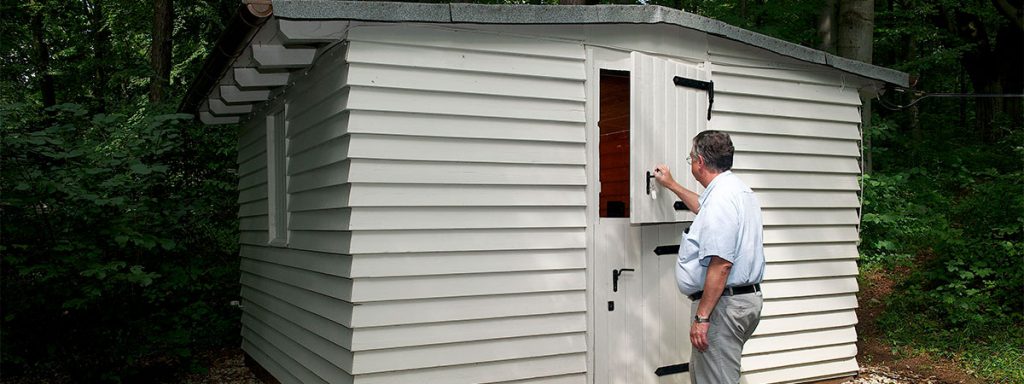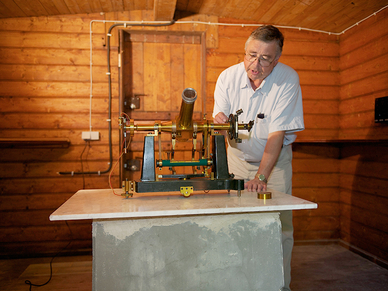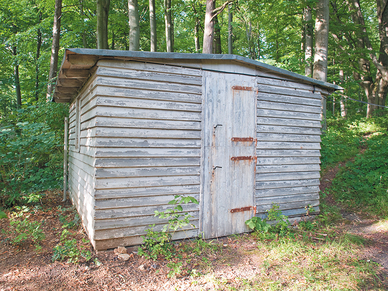The Astronomical Hut also dates back to 1902 – the same year in which the Old Earthquake Vault was erected. It houses a passage instrument installed on a large stone plinth.
Synchronisation of seismic data
The centrepiece of the Astronomical Hut is the “passage instrument”, which is trained on the sky. It was used for the precise, astronomical determination of time, since atomic clocks and the like did not yet exist more than 100 years ago. An electrical impulse was amalgamated with the seismogram, allowing seismic data acquired at different locations around the world to be synchronised. Today, the passage instrument is only displayed in the Astronomical Hut on tour days.
Background information on the passage instrument (from Wikipedia and GeoDZ)
A passage instruments is used to observe the times of star transits on a vertical reticle and, as a result of its design – which is very compact compared to the meridian circle – is portable to a limited extent. In contrast to the meridian circle, it is not used for the observation of star positions, but for the astronomical determination of longitude and time.
One advantage of the passage instrument is its simple principle. However, the following adjustments must be ensured:
a) Horizontal position of the axis
b) Precise east-west direction of the axis
c) Optical axis and horizontal axis positioned at right angles
Residual errors are identified through special measuring arrangements and accounted for by correction variables. Meridian transit times are observed visually (using an impersonal micrometer), photographically or photoelectrically.





